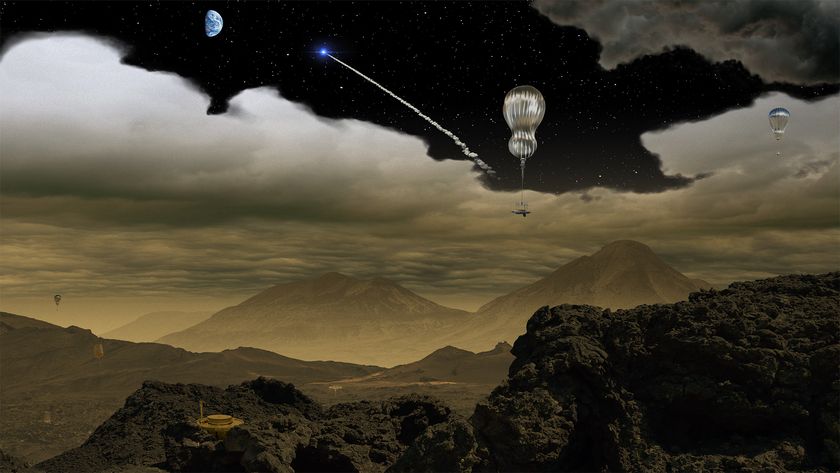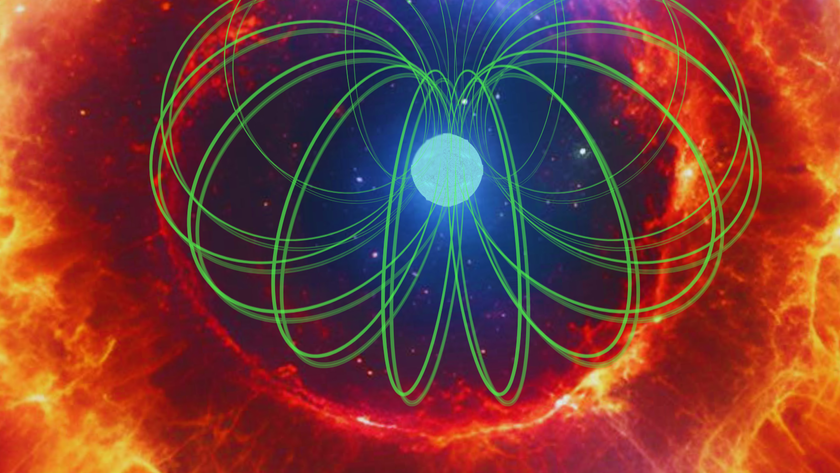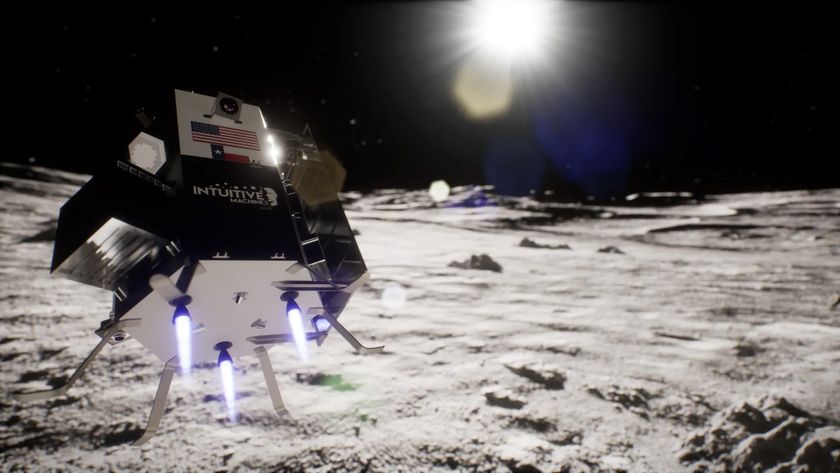Did Huge Impact Shape Planet Mercury?
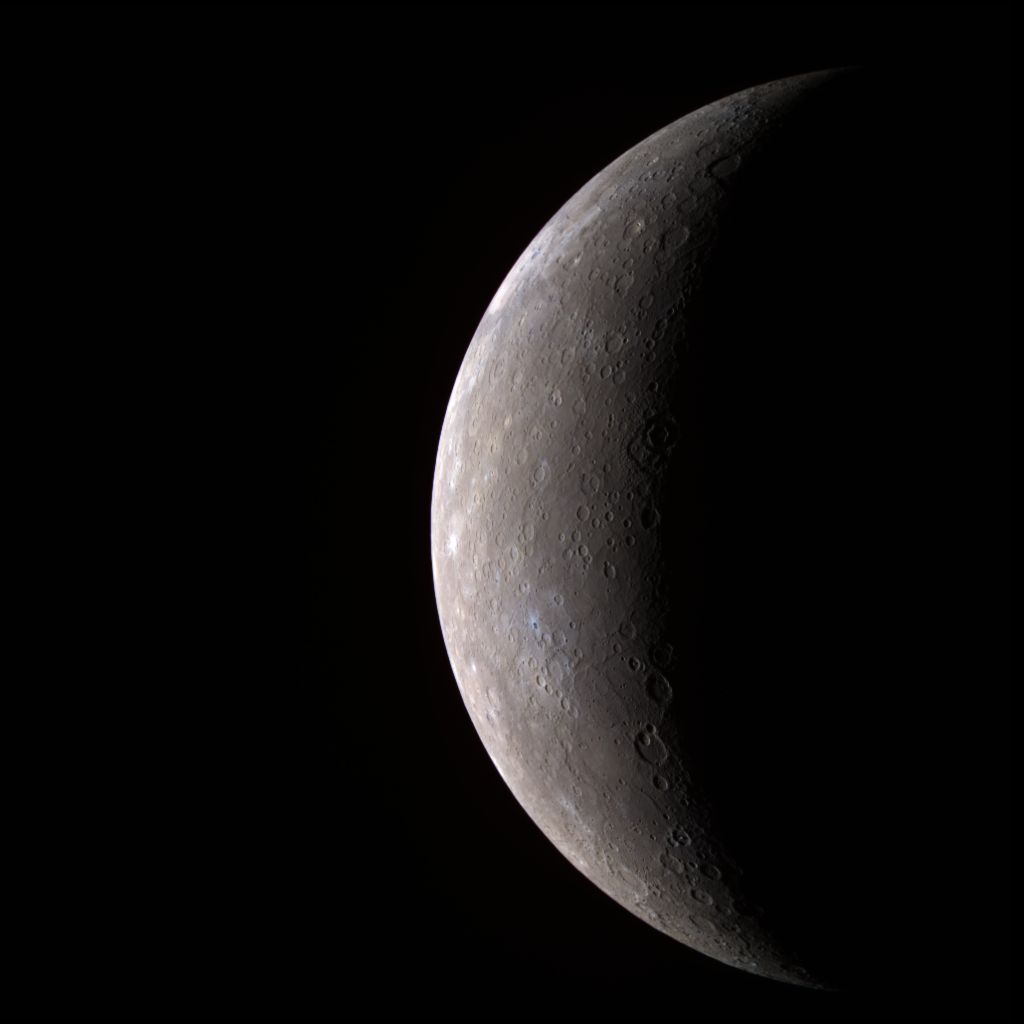
The mysterious makeup of the solar system's innermost planet may be due to a massive "hit and run" collision billions of years ago, a new study reports.
A colossal but glancing smashup with a roughly Earth-size planet could have stripped away much of proto-Mercury's rocky mantle, explaining why the tiny, sun-scorched world has such a huge iron core today, researchers say.
Indeed, scientists think Mercury's core makes up about 60 percent of its mass. The figure is about 30 percent for Earth, Venus and Mars, the other rocky planets in the solar system. [Inside Planet Mercury (Infographic)]
Before NASA's MESSENGER spacecraft (short for MErcury Surface, Space ENvironment, GEochemistry, and Ranging) entered orbit around Mercury in March 2011, many scientists assumed a giant impact had blasted off the planet's mantle, but if that were the case one would expect that Mercury's crust would be depleted of light elements.
"When MESSENGER arrived at Mercury, we found unexpectedly high abundances of the moderately volatile elements [potassium] and [sulfur]," MESSENGER team member Patrick Peplowski, a research scientist at the Johns Hopkins University Applied Physics Laboratory, told Space.com via email.
"Since then, we've also observed the high concentrations of [sodium] and [chlorine], which were also expected to be depleted on Mercury," added Pepowski, who was not involved in the new study. "This left a puzzle — how do you get a planet rich in moderately volatile elements and a giant [iron] core? Lots of folks have been scratching their heads about this for a few years now."
The answer may lie in the type of giant impact — or impacts — that Mercury endured shortly after forming about 4.5 billion years ago.
Get the Space.com Newsletter
Breaking space news, the latest updates on rocket launches, skywatching events and more!
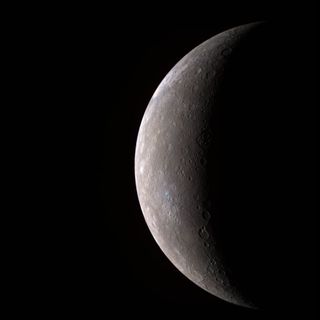
In the new study, Erik Asphaug of Arizona State University and postdoctoral researcher Andreas Reufer, of ASU and the University of Bern in Switzerland, ran computer models with the idea that many collisions in the early solar system were "hit and run." Rather than just building up bodies from smaller pieces, the idea goes, some moon- and planet-sized rocks would basically bounce off each other, sometimes knocking one body out of its orbit while the impactor and the leftover debris coalesced into a planet.
Such a collision might have created the planet Mercury, as well as Mars, and at least some of the larger asteroids such as Vesta and Psyche. The study appears online today (July 6) in the journal Nature Geoscience.
The hit-and-run model assumes that sometimes the impactor, which would have more volatiles in it, replaces the target, and then suffers repeated battering. The additional collisions will strip away more mantle material.
"If you look at collisions between two bodies, the changes to impactor are usually much larger," Reufer said. "We tried to apply this idea to Mercury — what would happen if Mercury was the impactor?"
Running computer simulations, Asphaug and Reufer found that you get a planet like Mercury most often when the impactor is 4.5 times as massive as Mercury is now, hitting a protoplanet that is 0.85 times the mass of the (current) Earth at about three times their mutual escape velocity at an angle of about 34 degrees. (Mercury is currently about 0.055 times as massive as Earth.)
Most important, their model assumed that the target body and impactor should start re-accreting material even as they go their separate ways. The researchers found that the vast majority of the material — mostly lighter elements from the mantle — will fall back onto the target body. The impactor will thus end up being more metal-rich than it was before, but still have a lot of volatiles in it.
Reufer said it's important to note that there are still a lot of questions the new model doesn't answer.
"Where would the larger body which hit today's Mercury have come from? And where is it now? Our model also implies quite substantial heating. What would be the effect of that to Mercury's composition?" All of these are questions for future studies, he said.
Peplowski called the work "classic science" because it's a case of applying new theories to explain observations that don't fit with the old ones.
"They have gone beyond the original [pre-MESSENGER] giant impact models to examine other scenarios," he said.
You can follow SPACE.com on Twitter @Spacedotcom. We're also on Facebook & Google+. Originally published on Space.com.
Join our Space Forums to keep talking space on the latest missions, night sky and more! And if you have a news tip, correction or comment, let us know at: community@space.com.

Jesse Emspak is a freelance journalist who has contributed to several publications, including Space.com, Scientific American, New Scientist, Smithsonian.com and Undark. He focuses on physics and cool technologies but has been known to write about the odder stories of human health and science as it relates to culture. Jesse has a Master of Arts from the University of California, Berkeley School of Journalism, and a Bachelor of Arts from the University of Rochester. Jesse spent years covering finance and cut his teeth at local newspapers, working local politics and police beats. Jesse likes to stay active and holds a fourth degree black belt in Karate, which just means he now knows how much he has to learn and the importance of good teaching.
